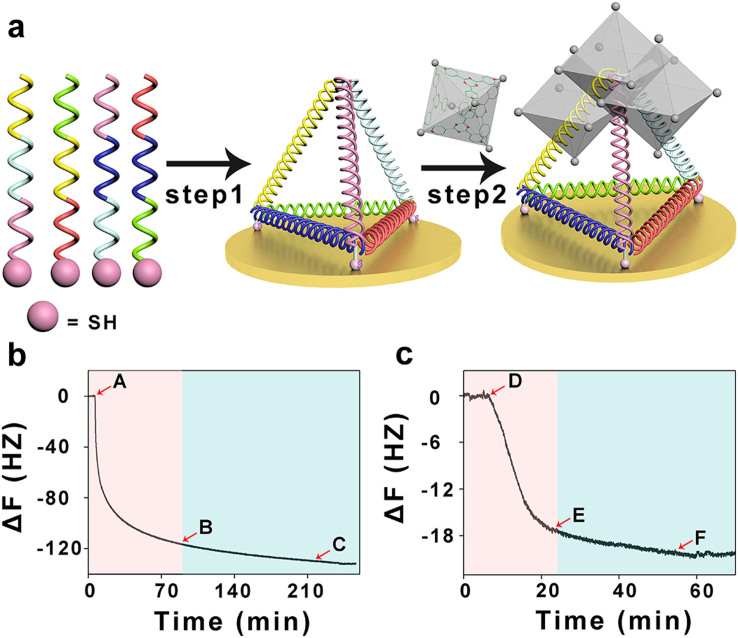Figure 2. QCM detection.
(a) Schematic representation of the formation of the proposed composite material. Step 1, the HS-3D DNA is expected to readily anchor at the Au surface by Au-S chemical bond. Step 2, M6L4 sphere frameworks are expected to be attracted to the platform by electrostatic interaction and hydrophilic interaction. (b) The self-assemble process of HS-3D DNA at the Au surface is monitored in real-time using QCM. It can be anchored at Au surfaces by Au-S chemical bond within 15 minutes, corresponding to the “rapid” process (red space). Meanwhile, the remaining self-assembled process from B to C takes 3 hours, corresponding to the “slow” process, and the change of frequency is less than 20 Hz in 3 hours, much slower than the first 15 minutes, corresponding to the “slow” process (blue space). It indicates that most of the HS-3D DNA are assembled on the Au surface. (c) The self-assemble process of DNA tetrahedrons and M6L4 sphere frameworks is monitored in real-time using QCM. In the presence of M6L4 sphere frameworks, a decrease in resonance frequency is observed, suggesting the adsorption of M6L4 sphere frameworks (red space). Then the self-assemble process is saturated (from E point to F point). But when the system is flushed with TM buffer (from F point to the end), the frequency does not change, which shows that the HS-3D DNA and the M6L4 sphere frameworks have strong binding interactions. All the experiments are carried out at room temperature.

